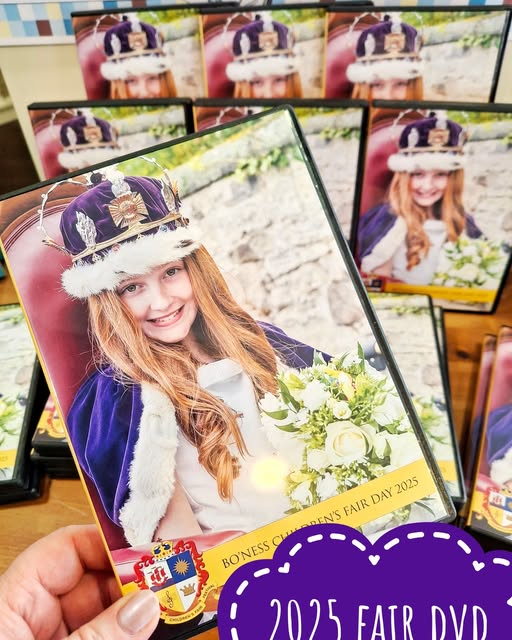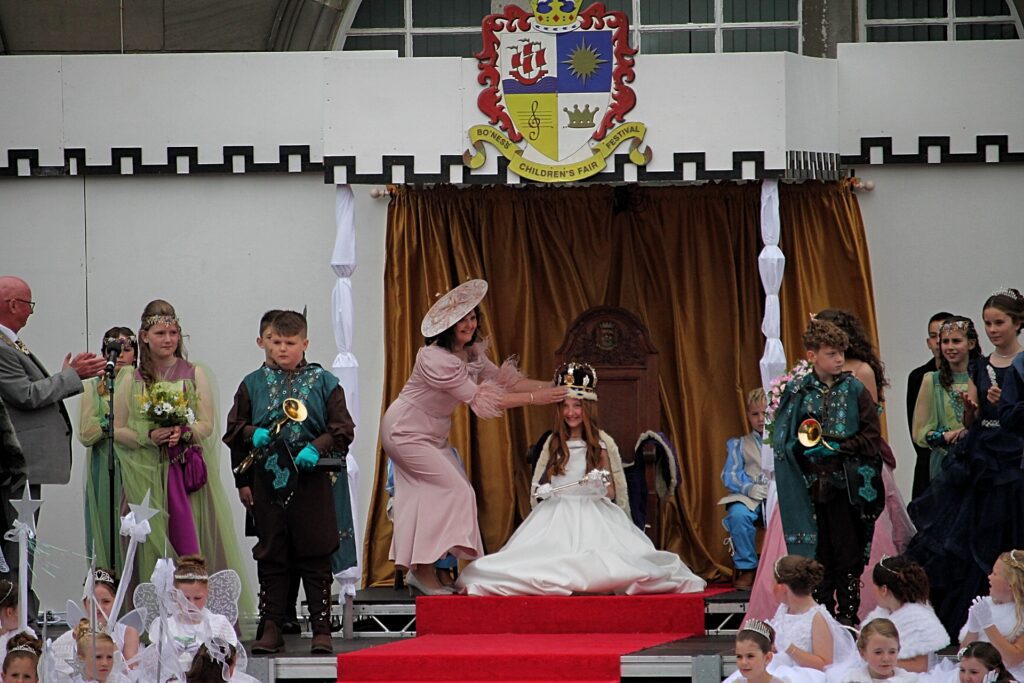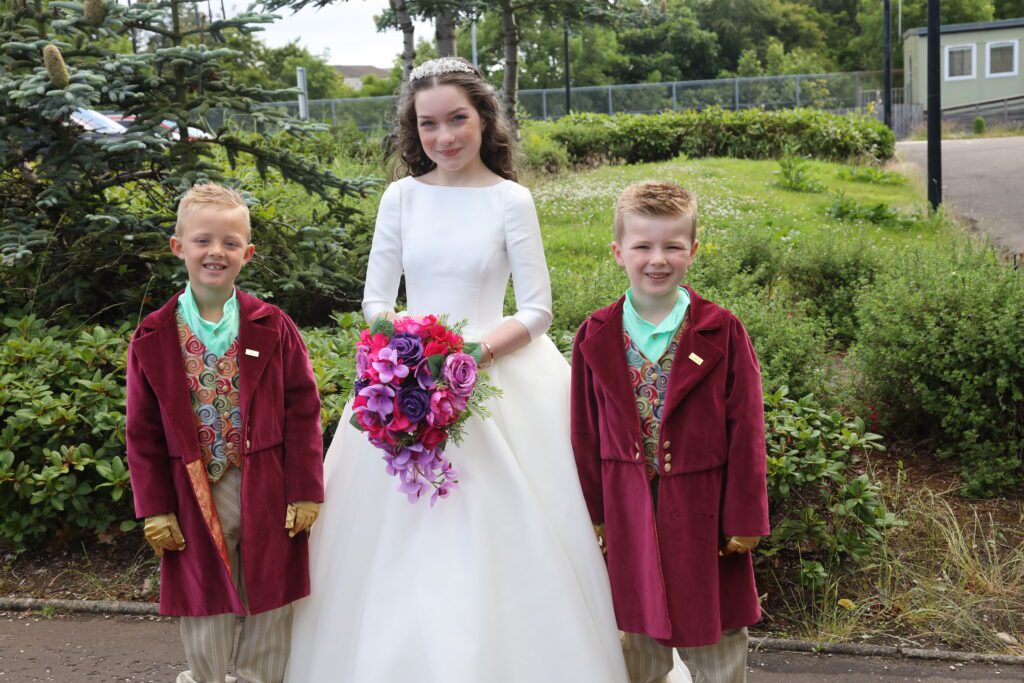One of the privileges of having reached the age of three score and ten, is being able to recall events, personnel and features of early Fairs and to pass on knowledge of experiences and changes in the Fairs over the years. It is also an added pleasure to recall and write about something which one has enjoyed and cherished.
Over the years many changes have taken place both in the content and conduct of the Fair, yet the essential features for its success are still fundamentally the same. The change from a ” Miners’ Day ” to a ” Children’s Festival ” was justifiable and most acceptable, for the event to continue and flourish, and we trust that further changes and innovations will be the life-blood of future Fairs.
The origins of the Fair are well known, but is the present generation ware that these early years were hard times, wages were low and the bare-footed child was common-place, but never on the Fair Day, when everyone wore their newest and best clothes. Though wages were low, prices in the shops were commensurate, ladies’ blouses 2/- to 2/6, skirts 3/11 to 4/6, men’s tacketty boots 3/6 to 6/-, McEwan’s Ale sold at 2/- per dozen pints, and assorted chocolates 4.5d per quarter pound. Motor cars and motor vehicles were non-existent, thus in my school days the majority of children required to walk in the Grand Procession. Haycarts, lorries and horse drawn vehicles were provided to transport the younger pupils. The Queen and her Pages, the Chief Lady-in-Waiting and Retinue, the Provost and Lady crowning the Queen, the Town Councillors were also provided with horse drawn carriages.
The floats, hatcarts and lorries were tastefully and appropriately decorated with boxwood, evergreens, bunting, ribbons and flags to provide a very colourful procession. The horses and ponies pulling the carts and spring vans were further dressed and decked out in burnished and sparkling harness, ribbons, rosettes and miniature bells. After these were scrutinised by three local farmers – R. Crawford, Bo’mains Farm; George Stewart, Drum Farm, and John Thomas, Myrehead Farm – points were awarded for the best dressed cart and decorated horse or pony, the winers being presented with money prizes and place cards which were greatly valued by the recipients. Judging was originally carried out in Grange Terrace and later moved on to Grangepans Show Ground and Shore Street. The prizes were 40/-, 30/- and £1, and each driver received 7/6 for appearance at the judging. Decorated arches received prize money of 30/- each, though there were usually only one or two erected.
It was not until after the First World War that vehicles and charabancs appeared. Previously pupils over seven years of age were obliged to walk in rows of four. Each class was in charge of his or her teacher, assisted by a pupil-teacher, parent or friend. The headmaster usually walked at the head of his school, keeping a watchful eye on his pupils. However, the procession was orderly and each school well disciplined, as the pupils proudly displayed their coloured ribbons and coloured caps. Whilst the girls wore white dresses, socks and shoes, the boys sported white shirts, caps in their school colours ( priced 6d each ), blue serge trousers with belts also in their school colours and rubbers or gutties. These dresses and coloured caps made a magnificent display in the Glebe Park during the crowning ceremony. The cap colours were more or less the same as today’s school colours: Bo’ness Academy, red and black. now red, black and gold: The Public, red: Infant School, yellow; Borrowstoun, royal blue and white: Grange, royal blue; Carriden, pale blue; Kinneil, black and gold; St Mary’s, deep yellow and white until 1946, when the colour became purple.
At the beginning of the century the roads within the town centre were built with cobble stones or causeys. Out with the town small stones bound together with tar and dust were used in places of today’s asphalt. If it was a warm day for the Fair the sun’s heat and the traffic played havoc with the road surfaces. It was a common sight to see gutties imbedded in the tarred streets, causing some amusements to the spectators, but distress and embarrassment to the gutty.
The procession route varied from year to year and always appeared to the pupils as never ending, although the customary route was from the Glebe Park to Ladywell or Kinnigars. The earliest coronation ceremonies took place in Craigallan Park, in front of Kinneil House or in the Band Stand in the Glebe Park.
On reaching the park for the revels the children were supplied with refreshments, which consisted of two currant sponges, a cake and biscuit, washed down with a mug or tinnie of milk. The tinnie was carried by each child on a ribbon or cord slung round the neck of waist. The said tinnie was also frequently used en route to obtain a drink of water from granny, aunt or friend.
On the Fair morning the townspeople were awakened to the strains of bands and the skirl of the pipes, these bands later being allocated to the respective schools. There were originally eight bands, whilst today 10 to 12 bands are engaged. Traditionally the Bo’ness and Carriden Band was attached to the Grange School and Carriden School, whilst Kinneil Colliery Silver Band led the Kinneil School. Over the years several foreign bands were engaged from Canada, U.S.A., Norway, Czechoslovakia and Denmark. Military, Navel and Air Force bands have been in attendance over the years.
Travelling a distance in the early days was difficult, so local bands were usually invited to take part. These included bands from Shotts, Winchburgh, Broxburn, Linlithgow, Armadale and Whitburn. The costs of these bands were minimal compared with today’s, their fees ranging from £20 to £25. Today fees may be £150 to £300, plus travelling expenses and meals. Fortunately, when foreign bands have been engaged in Edinburgh for a week, the Fair Committee usually receive their services at a modified fee.
After the bands played music throughout the town from seven to eight o’clock, two mounted police set off to escort the Queen, Pages and Chief Lady-in-Waiting from their respective homes to their school. In early Fairs these two mounted constables also led the Grand Procession, now they are replaced by the Police Inspector as Marshal of the Procession and a Sergeant.
The pupils assembled at 9.30 a.m. in their schools to receive a rice biscuit, banana and a shilling. Since regionalisation this practice has been discontinued to improve assembly arrangements at the schools. The pupils then marched along to the coronation park, led by a band, to arrive between 10 and 10.30 a.m. Originally the sitting of the was in rows with the youngest at the smallest at the front. Today the positioning of the children enables the younger pupils to have an improved view of the Queen and her Retinue as they approach the coronation platform.
The actual ceremony was very much in accordance with today’s ceremony, but the original platform was smaller and lower. After the Second World War the present extension, or apron, was added for the dancing and performances of the presentees.
The town gardeners supplied the decorations for the platform with flowers, boxwood and greenery along with flags. The costumes for the Queen’s Retinue were originally supplied by C. W. May, of London, then after the First World War they were obtained from a theatrical suppliers in Edinburgh.
After the crowning ceremony the Queen laid a wreath at the War Memorial and the Grand Parade started off, with the mounted police in front. The street in the early days were much narrower especially in North Street and Grangepans, which occasionally resulted in some hold-ups. The Queen and her courtiers were placed in the middle of the procession, followed immediately by a band. The Provost and Lady crowning the Queen, the Magistrates and Town Council were all in horse drawn carriages or Landaus.
The procession terminated at the Ladywell Park, Kinnigars or Bo’ness Academy Parks. Each school was then supplied with refreshments in fenced areas, whilst the Queen, the Lady crowning the Queen, Provost, guests and Town Council adjourned to Kinneil House or the Old Grange House for a meal and refreshments.
The Queen’s Revels consisted of musical items by the various bands in attendance, interspersed with displays of drill and gymnastics by senior pupils from Bo’ness Academy and the Grange School. Although the infant school did not provide a queen, like the Borrowstoun and Carriden schools, it gave a most acceptable and colourful display with two sets of maypole dancers. The dancing consisted of intricate dances around a maypole decked with a variety of colourful ribbons which were woven round the maypole as the pupils danced. The pupils were usually dressed in white or in coloured dresses to match their ribbons. The result was most spectacular and very popular with the public.
During the Revels each school teacher organised races for his or her pupils and supplied prizes of 3d, 2d and 1d for first, second and third. As these were usually elimination races every child received a prize.
As today, the Queen and Chief Lady receive a gift from the Lady crowning the Queen and the townspeople. The gifts varied from year to year, being either a gold brooch or gold bangle, necklace, watch or pendant.
At the conclusion of the Revels, which was at 5 o’clock, the children were summoned to their respective enclosures by a roll of drums. Once assembled in their classes and schools, they were conducted back to their schools by a band for dismissal.
To complete the day’s entertainments a visit to the ” shows ” was a must for the family and everyone visiting the town. The shows were held in Corbiehall from the Backhill along to the Wagon Road and at times even extended to both sides of the road. There were also a number of roundabouts in Grangepans which acted as an overflow to the Corbiehall shows. The shows were a meeting place for friends, relations and visitors from all parts of the country and from abroad. There was a much greater variety of stalls and entertainments then than today. Popular with the male members of the community was the boxing booth and dolly shies, others favoured the gondolas, steam-boat swings, helter-skelters, the hobby-horses, the cake-walk, coconut shies and fortune tellers, but bingo was not available.
The powers required for a driving of the roundabouts was supplied by steam tractor-engines, as electricity was not available. Lighting of stalls and booths was by paraffin oil lamps.
After a visit to the shows, further entertainment was supplied in the days of the 1d matinee by two picture houses-Hippodrome or Jeffries. The cost of a seat ranged from 3d to 1d and the movies were all silent and in black and white, accompanied by an orchestra consisting of a piano and three or four violinists. The young ladies and gentlemen usually favoured the dances at teh Town Hall or Gardener’s Hall until one o’clock in the morning.
The day terminated with further private parties for the few, but by everyone it was considered a great day, full of pleasure and enjoyment, and ended with good wishes for the following year’s Fair and many more to come.
UNKNOWN






